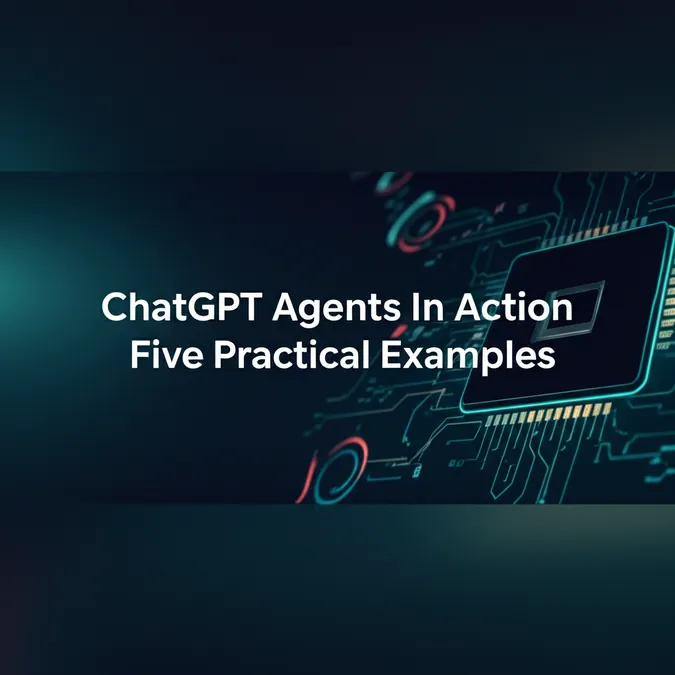Developer Offer
Try ImaginePro API with 50 Free Credits
Build and ship AI-powered visuals with Midjourney, Flux, and more — free credits refresh every month.
AI in Education A Guide to ChatGPT
From polishing grammar to creating personalized study aids, ChatGPT is quickly becoming a common fixture in classrooms and homes. This popular generative AI, with its ability to mimic human writing and solve complex math problems, has fundamentally reshaped how we approach writing and learning.
When San Francisco-based OpenAI launched its chatbot in late 2022, educators were initially skeptical. New York City Public Schools, for instance, banned ChatGPT in January 2023, only to reverse its policy months later, acknowledging AI's growing role in the modern world. “We’ve seen both excitement and apprehension,” notes Harrison Parker, an executive at the education technology company Linewize.
While some educators worry about AI's potential to facilitate academic dishonesty, others are embracing its potential to enrich the learning experience. According to College Board research, the use of generative AI for schoolwork among high school students is on the rise, increasing from 79% to 84% between January and May 2025.
As the debate continues, here’s what students and families should understand about ChatGPT's place in education.
How ChatGPT Differs from Other Tools
Unlike digital aids like spellcheckers or Grammarly, ChatGPT's capabilities extend far beyond simple corrections. It can draft entire essays, explain difficult math problems, simulate conversations, and analyze literature. “In the past, we’ve used tools like Google Search, Grammarly and Alexa in tandem,” Parker explains. “ChatGPT, on the other hand, synthesizes all of these functions and produces entirely new text.”
Erik Guzik, a professor at the University of Montana’s College of Business, describes it as “more like an intellectual partner or collaborator than a search tool.”
Corey Brady of Southern Methodist University’s Simmons School of Education adds that the tool's conversational interface and its training on vast amounts of text give it an “impression of the air of encyclopedic knowledge and even of wisdom.” For educators, this introduces a new dynamic where students can produce work that may not reflect their true understanding.
Addressing the Concerns Around ChatGPT
The primary concerns surrounding ChatGPT involve its potential for misuse, such as cheating on assignments or research papers. “There has been a great deal of concern among teachers and administrators about whether they can detect essays that have been written by generative AI,” Brady says.
To counter this, Guzik emphasizes the need for transparency and clear guidelines. He argues that schools should teach students to use ChatGPT “as a tool to support and develop human thinking, not a shortcut or replacement.”
It's crucial to remember that ChatGPT has limitations. It can be factually incorrect, miss important context, exhibit bias, or even invent information. “It’s powerful, but it needs human oversight and evaluation,” Guzik warns. “So, we return once again to the importance of critical thinking by us humans.”
Privacy is another significant issue. “Many AI tools collect significant user data,” Parker states. “Educators should prioritize tools that are transparent about data use, comply with student privacy laws and allow schools to maintain control over information.” OpenAI's terms require users to be at least 13, with parental permission for those under 18, but parental monitoring remains the best practice.
Productive Ways to Use ChatGPT in Education
Despite the challenges, both teachers and students are discovering productive ways to integrate ChatGPT into the learning process. Teachers are now focusing on teaching students how to prompt AI thoughtfully and use it for problem-solving. Assignments are also evolving to emphasize the process—drafts, reflections, and reasoning—rather than just the final product.
Students are using ChatGPT to create custom practice quizzes from their class notes, get feedback on essay drafts, and even formulate counterarguments for debates. Brady notes that the tool can serve as a simulated evaluator for their writing. The most effective use, according to Parker, is when ChatGPT “is treated as a tool for exploration.”
Interestingly, many students are already engaging in sophisticated ethical reasoning about the responsible use of AI, which is why many academics advocate for including them in these important discussions.
The Future of AI in the Classroom
“AI isn’t going away,” Parker concludes. “It will become part of the educational fabric much like calculators or the internet did decades ago. The real challenge isn’t stopping students from using it — it’s teaching them to use it wisely.”
Compare Plans & Pricing
Find the plan that matches your workload and unlock full access to ImaginePro.
| Plan | Price | Highlights |
|---|---|---|
| Standard | $8 / month |
|
| Premium | $20 / month |
|
Need custom terms? Talk to us to tailor credits, rate limits, or deployment options.
View All Pricing Details

